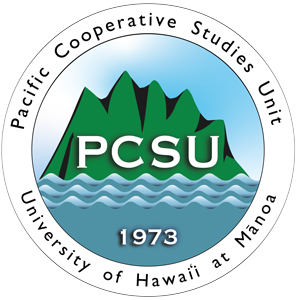
Plant Pono Program
Contrary to what some people think, invasive doesn’t mean ugly or useless. Ninety percent of invasive species in Hawai‛i were deliberately imported because they were appealing in some way to people. This is particularly true for plants. Decades of historical records from Hawai‛i and around the world show that the majority of plants that became invasive were first introduced on purpose, usually with good intentions. Yet despite a history of significant environmental damage from invasive plants, Hawai‛i currently has almost no laws preventing the importation, sale, or cultivation of plant species, even those already known to be or likely to be invasive.
On every island, nurseries can be found selling invasive species. This is not always with malicious intent – some are simply uninformed, some think that the absence of a legal restriction must mean a plant is safe. Consumers also believed that plants in nurseries must be safe, not knowing that it is still legal to sell most invasive plant species in Hawai‛i. A Big Island survey found that 93% of consumers did not want to plant anything invasive – but they also reported not knowing how to make that determination.

Southern Turf in Kona was our first Plant Pono endorsed business. 
ESP Nursery sells plants at the Kamuela Stables Farmers Market on Saturdays.
The Plant Pono Program
To assist nurseries in ensuring they do not accidentally spread invasive species and to help our island residents make good planting choices, we are proud to offer the Plant Pono program. Our endorsed businesses voluntarily refuse to sell invasive plants, and shoppers can feel confident while choosing plants from these nurseries. Additionally, PP nurseries actively use Best Management Practices to control pests like the little fire ant, coqui, and slugs that commonly travel on potted plants.
Plant enthusiasts of all levels can find a wealth of information at PlantPono.org. Use the search function to find the right non-invasive plant for your climate, yard size, and even desired color! Learn more about the 49-step background check, designed by prominent botanical specialists, that is used to determine the likelihood that a new plant could be invasive to Hawai‛i. Find out if that potted plant you picked up on impulse is going to be a great addition to your landscape – or an out-of-control headache down the road! Plant with confidence and intention using PlantPono.org.
Hawai‛i Island Endorsed Businesses
To earn a Plant Pono endorsement, a nursery or landscaping company pledges not to sell invasive plants and to take strict measures to prevent the spread of invasive pests like little fire ants and coqui. Currently, Hawai‛i Island and Kaua‛i have active Plant Pono endorsement programs.
Native plants are always a great choice for your garden and landscaping

Ma‛o Hau Hele (Hibiscus brackenridgei) 
Kou (Cordia subcordata)
Photos (L-R): BIISC, Forest & Kim Starr
Endorse your business
The Plant Pono program seeks to recognize exemplary businesses that act to protect their business, community, and island from the threat of invasive species. Plant Pono is a voluntary partnership based on shared values between the Big Island Invasive Species Committee (BIISC) and green businesses on Hawai‛i Island. Together we believe it is vital to protect and promote:
- Native ecosystems and biodiversity
- Forested watersheds that collect and store water
- Productive agriculture and locally-produced food
- Economic viability of local businesses
The best way to combat invasive species is not to sell or propagate them. Green Industries play a crucial role in stopping the spread of invasive species. Plant Pono is a way to be honored and promoted for conducting business in a pono (righteous) way.
Endorsed nurseries on the Big Island agree to:
- Discontinue the sale of the No Grow! plants (9 invasive plants).
- Schedule an annual visit of nursery, grounds, and/or work areas by representatives of the Big Island Invasive Species Committee (BIISC).
- Promote the use of non-invasive or native plant species over high-risk plants.
- When considering introducing a new plant species to the state, nurseries request a free, non-binding assessment from the Hawaii-Pacific Weed Risk Assessment. The HPWRA is a scientific model that predicts a species’ likelihood to become invasive in Hawaii based on the plant’s botany, reproduction, climate suitability, and behavior in similar ecosystems.
- Follow best management practices to reduce the spread via plant materials of coqui frogs, little fire ants, and other identified noxious pests such as Rapid ‛Ōhi‛a Death (ROD).
Advantages of the Plant Pono Endorsement Program

The Plant Pono program was launched to support both consumers and industry across Hawai’i. It’s a partnership between the Coordinating Group on Alien Pest Species (CGAPS), the island Invasive Species Committees (ISCs), and members of the green industry. Plant Pono seeks to educate both consumers and suppliers about invasive species and to highlight and promote those businesses that commit to protecting Hawai‛i from invasive threats. Visit plantpono.org to learn more about how plants are designated as invasive using the Hawai‛i Pacific Weed Risk Assessment. Use the database of over 2,000 plants to look up a plant’s evaluated risk and find carefully selected non-invasive replacement plants for your yard.
